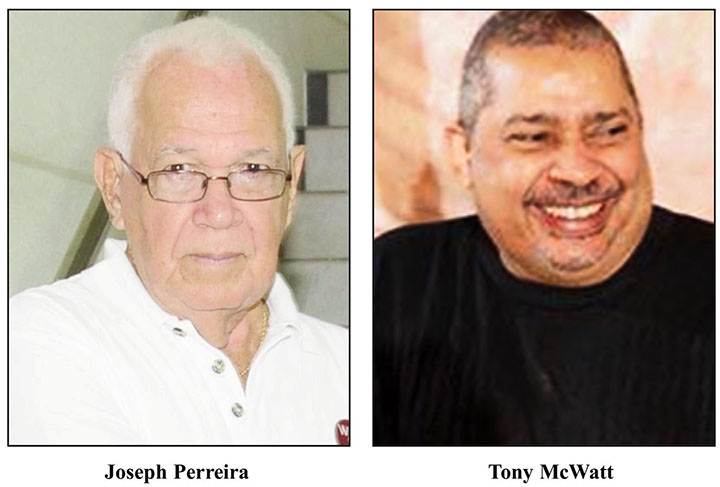The subject matter for this article was initially intended to be all about `tapegate’ the continuing rather unpleasant saga involving the appearance of West Indies players in globally televised international matches clad in shirts that have the former team sponsor’s logo covered over with masking tape. Having made its first appearance as far back as last year’s Sri Lanka Test Series, it has since continued to be an issue until as recently as the just concluded West Indies-Ireland ODI Series. We had intended to examine the likely damaging effects of the `tapegate’ scandal on the reported future presidential aspirations of cricket West Indies current Vice President, Dr. Kishore Shallow.
Within the past month Dr. Shallow has been the spokesperson for CWI’s highly unsatisfactory public explanations in defence of `tapegate’s’ unfortunate, unsavory and as yet, unabated occurrence.
Perhaps luckily for Dr. Shallow, however, our attention has now been duly diverted by the Guyana Cricket’s Board’s (GCB) recent announcement of its intention to meet with the country’s Education Minister to discuss plans for the introduction of a new schools cricket initiative.
According to the GCB release “The Board plans to place emphasis on nursery, primary and secondary schools, with the nursery aspect being formally explored for the first time in the history of GCB’s cricket administration.
The nursery schools’ main focus will be to introduce cricket-related skills to kids at an early age. These training and development activities will be carried out across all three counties of Guyana under the categories: Nursery, Under-9, Under-11, Under-13, Under-15, Under-17, and Under-19 and will feature key development areas for male and female cricketers.”
Maybe it’s just sheer coincidence, and if so, certainly a most welcome one, but we would like to think that the GCB’s announced initiative may have been inspired to some degree by the New Year’s Resolutions we had suggested in our January 2 article: https://www.stabroeknews.com/2022/01/03/sports/some-suggested-new-years-resolutions-for-cricket-west-indies/ The first two of that article’s fifteen provided suggestions were in fact directly related to the establishment of competitive school’s cricket programmes from those below the age of nine through to the Under 19 level.
We had also suggested that West Indies cricket’s very rich history should also be made a part of the curriculum for both primary and secondary school students.
As such we would hope that when the GCB president and the Education Minister do meet, their discussions will indeed include an examination of the possibilities for that suggested addition to the schools’ curriculum, in time for the coming September semester.
The GCB’s plans for the implementation of its Schools Cricket initiative, has set a most worthy example for CWI’s five remaining member boards to immediately follow.
No less than as reputable a person as the legendary former fast bowling great Michael Holding, has suggested that reestablishing cricket as the most popular and engaged in, outdoors activity among school-aged children throughout the Caribbean will be a most necessary first step to restoring West Indies cricket to its now long lost former glory.
Holding’s reasoning, with which we wholeheartedly agree, is that the more children there are playing cricket at the various age levels, the greater will be the numbers of those progressing to the very top of the competitive structure. That in turn will allow West Indies selectors of the future, the luxury of having far more quality players available to choose from when charged with the task of picking the best possible teams.
For West Indies Test cricket specifically, it will also provide a security blanket for the now inevitable non-availability of some players, as a result of their conflicting commitments to the various T20 Franchises across the globe.
In terms of youth cricket development, we had also suggested that qualified coaches should be seconded to as many schools as possible, so that those who choose to pursue the sport, can be taught the proper techniques for batting, bowling and fielding at a very early age. One of the now most noticeable reasons for West Indies’ cricket continuous demise has been the tendency for far too many of our players, especially the batsmen, to reach the highest levels with glaringly obvious deficiencies in their techniques. Former national and West Indies players can be seconded, when and wherever necessary, to cover any shortfalls in the availability of qualified coaches.
As a means of providing as many competitive playing opportunities as possible for West Indies cricketers, particularly those in the U23 age bracket, we had also suggested that CWI should this year, revert to the previous 10 team format for its annual Regional Super50 Tournament. CWI had promised that this year’s tournament would be held in its customary end of October-early November time frame, and that the format would involve the same 10 teams, including Canada and the US, that played in the 2018 competition.
That would indeed be a most welcome development. Among the readily obvious advantages such an expanded tournament would provide are the inherent opportunities for some of the younger, talented players, to stake their claims for consideration to be included in the West Indies squads that will be participating in its attempts to qualify for next year’s India hosted ICC ODI World Cup.
The inclusion of Canada and the US, playing as they did back in 2018 in different country hosted zones, would also, of course, provide significant tourism potential opportunities for match attending visits of the family and friends of their representative players. In that regard, we hope that CWI will learn from its far too often repeated failings of the past of not determining and announcing the tournament’s venues and match schedules in sufficient time as to allow the actual participation of as many such interested individuals as possible. Notwithstanding any possible COVID affected changes, there is now absolutely no reason why the venues and match schedules for this year’s 10 Regional Super50 Tournament should not be determined and announced by the end of this coming May, six months in advance of the competition’s commencement.
There’s much to look forward to in the weeks ahead. Particularly in terms of which of CWI’s remaining Member Boards will indeed now seek to follow GCB’s very worthwhile School’s Cricket initiative. More immediately all eyes, including ours, will be turned to the Barbados hosted West Indies – England January 22- 30th five match T20 Series.
The Series outcome could well be the final acid Test for the failing fortunes of both the current West Indies white-ball captain Kieron Pollard, and the team’s Head Coach Phil Simmons. The performances of both gentlemen in their respective roles have come under increasing scrutiny of late. An ever-increasing number of fans and followers now view Messrs Simmons and Pollard as primary sources for the West Indies’ very dismal and disappointing results in white-ball cricket within the past two years.
From its very first match to the last the West Indies – England T2o Series will also provide tangible indications as to the status of the `tapegate’ saga. Will it now be entering its fourth series episode or has the Good Dr. Shallow finally managed to salvage his reputation by bringing it to an end?
About The Writers:
Guyana-born, Toronto-based, Tony McWatt is the Publisher of both the WI Wickets and Wickets monthly online cricket magazines that are respectively targeted towards Caribbean and Canadian readers. He is also the only son of the former Guyana and West Indies wicket-keeper batsman the late Clifford “Baby Boy” McWatt.
Guyana-born Reds (Perreira) has served as a world-recognized West Indies Cricket Commentator for well over fifty years. Reds made his broadcasting debut during the 1971 West Indies-India Test Series, and has commentated on 152 matches since then!






